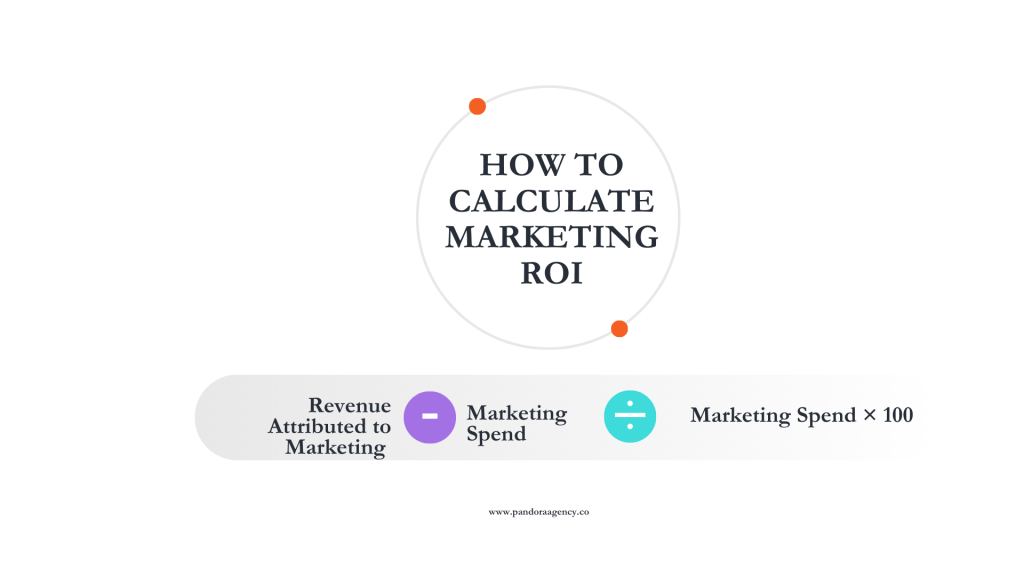Every business hires a marketing agency with one clear expectation: measurable marketing ROI. The goal isn’t just pretty campaigns or viral content; it’s tangible growth, more qualified leads, and revenue you can track back to marketing spend.
But here’s the harsh truth: most agencies fail to deliver marketing ROI. Instead, they drown clients in vanity metrics like impressions, clicks, and “engagement rates” that look good in reports but don’t move the needle.
For decision-makers, this disconnect creates wasted budgets, frustration, and scepticism about whether marketing even works.
The reality is that marketing can and should be a profit centre, not a cost sink. To get there, you need to understand why agencies struggle, how to spot the red flags early, and how to calculate ROI the right way. In this article, we’ll break down:
- Why so many agencies overpromise but underdeliver
- The exact red flags you should watch for when choosing a partner
- Practical steps (and a formula) to calculate Marketing ROI and measure success
Let’s start with a simple definition.
PS: If you’re using Google’s Preferred Sources, remember to add our site.
Table of Contents
ToggleWhat Is Marketing ROI?
At its core, Marketing ROI is a measure of how effectively your marketing investments generate profit. Salesforce calls it the “return on investment your company receives from all of your marketing activities.”
ROI answers the most important question every business leader asks: “For every dollar I spend on marketing, how much revenue am I getting back?” Unlike vanity metrics such as likes or impressions, ROI ties marketing performance directly to business outcomes.
The formula is straightforward:
(Revenue Attributed to Marketing – Marketing Spend) ÷ Marketing Spend × 100
For example, if a campaign generates ₦10 million in revenue and costs ₦2 million to run, the ROI is 400%. This number immediately tells you whether the effort was worth it, and more importantly, whether it should be scaled, adjusted, or scrapped.
Of course, measuring ROI isn’t always as simple as plugging numbers into a calculator. Here’s what Pandora Agency’s Managing Director, Kehinde Ruth Onasoga, has to say about it:
Understanding and tracking ROI matters because it shifts marketing from being seen as a cost center to being recognized as a growth driver. When you can prove that marketing generates measurable returns, it’s no longer an expense to justify; it’s an investment that fuels sustainable business performance.
Why Most Agencies Fail to Deliver on Marketing ROI
Many agencies promise results but quietly fall short when it comes to Marketing ROI. They present polished reports filled with colorful charts and high engagement numbers, yet behind the surface, there’s little to show in terms of revenue or measurable business growth.
This gap between what’s promised and what’s delivered is the reason many business leaders walk away from agency relationships feeling frustrated or worse, financially burned.
Here are 4 key reasons why most agencies fail to deliver on marketing ROI:
1. Obsession with vanity metrics.
It’s easy to showcase rising follower counts, website clicks, or video views, but these don’t necessarily translate into revenue. A CEO or CMO isn’t interested in how many people “liked” a campaign if sales pipelines remain stagnant.
When agencies focus on metrics that look impressive but don’t tie back to business objectives, the result is wasted budgets and disillusioned clients.
2. Lack of alignment between marketing activity and organizational goals.
Agencies often dive into running ads or creating content without first asking the fundamental question: “What does success look like for this business?”
Without a direct connection to growth targets such as increasing qualified leads, reducing customer acquisition cost, or improving conversion rates, even the most creative campaigns miss the mark.
3. Short-term thinking
Many agencies chase quick wins, offering shortcuts or “hacks” that provide temporary spikes in numbers but no lasting impact.
Sustainable marketing ROI comes from a long-term, structured strategy that integrates multiple channels and nurtures leads through the funnel, not from one-off tactics.
4. Lack of Measurement Framework
Without proper tracking systems, attribution models, and benchmarks, agencies cannot accurately determine where revenue originates.
This leaves clients guessing whether their investment actually worked. Even worse, it makes optimization nearly impossible because there’s no clear view of what to fix or scale.
A perfect illustration of avoiding these pitfalls comes from our work with NiRA, the Nigeria Internet Registration Association. They faced stiff competition from global domain extensions like .com, and awareness of .ng was limited.
Instead of chasing surface-level visibility, we designed a multi-channel campaign anchored on measurable outcomes. In just three months, NiRA generated 2,602 qualified leads while building nationwide awareness and momentum.
The success came not from vanity metrics, but from a structured, ROI-driven strategy that tied every activity back to the business goal.
The lesson is clear: most agencies fail to deliver ROI because they chase activity, not accountability. Without strategy, alignment, and measurement, the promise of ROI remains just that, a promise, never a reality.
How to Spot an Agency That Will Waste Your Marketing Budget
The easiest way to avoid disappointment is to recognise the warning signs before you commit. Here are some warning signs to look out for:
- Quick wins. Marketing doesn’t work like flipping a switch. Sustainable growth requires time, testing, and iteration.
If an agency insists they can double your revenue in 30 days without reviewing your market conditions, customer base, or current assets, you’re dealing with unrealistic promises.
These shortcuts may generate a temporary spike in activity, but they rarely lead to lasting ROI. - When agencies talk only about tactics, such as social media ads, Search Engine Optimization, or content creation, without tying them back to broader business objectives.
An ROI-driven agency should be able to clearly explain how each tactic contributes to measurable growth, whether that’s generating leads, reducing acquisition costs, or improving retention.
If the conversation never moves beyond creative executions, you may end up with attractive campaigns that don’t add to your bottom line. - Transparency is another critical factor. If an agency avoids setting up proper tracking, refuses to discuss benchmarks, or can’t explain how they will calculate ROI, it’s a sign they lack accountability.
- Finally, beware of agencies that lean heavily on reputation or awards but struggle to provide hard evidence. Case studies, testimonials, and data-backed examples should form the backbone of their pitch.
At Pandora, for instance, our clients don’t just praise our creativity; they recognize our ability to deliver measurable performance.
These red flags, when ignored, almost always lead to wasted marketing spend. Spotting them early ensures your investment goes toward a partner that values accountability, strategy, and real ROI.
How to Measure & Improve Your Marketing ROI
Knowing whether your marketing spend is actually working starts with measurement. Too often, businesses rely on surface-level data or agency reports that highlight activity but not profitability.
To move beyond vanity metrics, you need to calculate ROI consistently and use the insights to guide smarter investments.
Here’s the formula again:
(Revenue Attributed to Marketing – Marketing Spend) ÷ Marketing Spend × 100

This equation provides a percentage that reveals whether your campaigns are generating a positive return.
For example, if you spend ₦5 million on a campaign and it delivers ₦20 million in sales, your Marketing ROI is 300%. This single number allows decision-makers to see if marketing is a cost or an engine for growth.
Calculate your marketing ROI beforehand: Of course, modern marketing rarely happens in a straight line. Prospects may encounter your brand through ads, social content, email nurturing, and multiple touchpoints before converting.
That’s why using a marketing ROI calculator or dashboard is essential. These tools integrate data from different platforms, attribute revenue more accurately, and give you a clearer picture of what’s truly working.
It’s also important to zoom in on specific channels; For example, content marketing ROI is often underestimated because it compounds over time.
A single blog post might not generate instant sales, but over months or years, it can bring in steady organic traffic and leads at a fraction of the cost of paid advertising.
Tracking ROI by channel helps you see which investments deserve more budget and which need adjustment.
Improving ROI is about action. Regular audits, smarter targeting, refined messaging, and nurturing systems all help reduce wasted spend and increase efficiency.
This is where ROI-driven agencies excel: by constantly aligning activity with business outcomes, they ensure your investment delivers measurable growth.
Consistently track and optimize ROI: When you calculate, track, and optimize ROI consistently, marketing stops being guesswork. It becomes a predictable, scalable growth driver for your business.
Marketing ROI Case Example
To see what an ROI-focused approach looks like in practice, let’s revisit the story of NiRA, the Nigeria Internet Registration Association.
Tasked with promoting Nigeria’s .ng domain, NiRA faced a steep challenge. Competing with global giants like .com and .org, awareness of .ng was low, adoption rates were sluggish, and scepticism was high.
Rather than chase surface-level visibility, the campaign was designed around measurable business outcomes. We built a multi-channel strategy that combined precision-targeted digital ads, nationwide PR placements, radio campaigns, and experiential activations.
Each channel was carefully integrated so that awareness fed directly into engagement, and engagement turned into qualified leads.
The results spoke for themselves. In just three months, NiRA generated 2,602 qualified leads, far exceeding the initial targets.
The campaign didn’t just boost numbers, it transformed perception of the .ng domain, positioning it as the natural choice for Nigerian businesses. By tying every activity back to lead generation and brand adoption, the initiative created momentum that continues to drive sustainable growth.
What makes this example powerful is that it highlights the difference between activity and accountability. Many agencies could have run ads or bought visibility, but few could demonstrate ROI at this level.
By focusing on structured strategy, transparent measurement, and client outcomes, NiRA’s campaign became a model for how marketing can be both creative and commercially impactful.
This is the essence of ROI-driven marketing: delivering results that matter.
Key Takeaway
The reality is simple: most agencies fail to deliver Marketing ROI because they chase activity, not accountability.
They focus on vanity metrics, quick wins, and flashy campaigns instead of developing strategies that are directly tied to revenue and growth. That’s why so many businesses feel let down; their marketing looks good on the surface, but falls short where it matters most.
If you’re evaluating your own marketing and wondering where the gaps are, don’t settle for guesswork. Ask the harder questions, demand accountability, and work with partners who tie creativity to results.
Book Your Free Audit to see how these strategies can apply to your business.






Leave a Reply